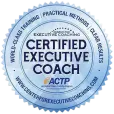
Building Unstoppable Momentum
“When torrential water tosses boulders, it is because of its momentum.” — Sun Tzu
Have you ever faced a challenge in your business that felt impossible to overcome? Maybe it was trying to boost sales in a slow season, dealing with empty tables during the week, or finding the energy to keep pushing forward during tough times. Those moments can feel like staring down a giant boulder—too heavy to move.
This morning, as I read this passage from The Art of War, I thought about how in business, even the heaviest obstacles can be overcome—not with brute force, but with momentum. Like torrential water gaining strength as it flows, momentum builds over time and can help you overcome challenges that once seemed immovable.
The hardest part of any challenge is starting from a standstill. Without momentum, every action feels like an uphill climb. But when you maintain momentum, you create a compounding effect. Each step builds on the last, making it easier to move forward. Lose momentum, and it’s like starting over again and again—wasting time, energy, and resources just to get back to where you were. For more information about this idea, I recommend Jim Collins’ book Turning the Flywheel.
Momentum doesn’t usually happen by chance, though. At least not the good kind. It’s built through consistent action, focused effort, and the willingness to adjust when things don’t go as planned. Let’s explore how you can create and sustain momentum in your business and turn your biggest challenges into opportunities.
Small Actions Create Big Impact
Momentum almost starts with small, intentional steps—not grand gestures. While it may feel like small actions can’t make a difference, they build the foundation for transformative growth over time.
Example: Morning Roast Café struggled to attract customers during weekday afternoons. The owner noticed that local professionals often worked remotely but had few spaces where they could focus. Instead of overhauling their marketing strategy, they launched a “Quiet Work Afternoon” program: free WiFi, reserved seating, and light snacks. Slowly but steadily, the café became a go-to spot for remote workers. Each new customer brought a ripple effect of referrals and repeat visits, turning an underused time slot into a profitable opportunity.
Key Insight: Small, targeted actions can break inertia and build the momentum needed to tackle larger goals.
Challenge: Identify one slow period in your business. What’s one small, low-risk action—like a targeted promotion, event, or service enhancement—you can implement this week to start building momentum?
Consistency Is the Key to Growth
Momentum thrives on consistency. While bursts of energy might create short-term results, it’s the steady, ongoing effort that builds lasting success.
Example: Turning Pages Bookstore struggled with customer loyalty, and early turnout for their Saturday morning storytime events was disappointing. The owner doubted whether it was worth continuing but decided to stick with the plan. Slowly, word began to spread. Parents told their friends, and kids looked forward to each week’s story. Six months later, the event had become a cornerstone of the bookstore’s identity, driving a significant increase in children’s book sales and a steady flow of foot traffic.
Key Insight: Consistency creates trust and reliability, both for your customers and for your team.
Challenge: Choose one area of your business—marketing, customer engagement, or team development—where consistency has been a struggle. Commit to steady action for the next 90 days and track the results.
Celebrate Progress to Build Confidence
Big goals can feel overwhelming, but celebrating small wins along the way keeps energy and motivation high. Recognizing progress reminds you—and your team—that your efforts are paying off.
Example: At Hearthstone Café, wait times during the morning rush were a frequent source of customer complaints. The owner set a goal to improve, but instead of waiting for the final outcome, they celebrated each milestone. When the team reduced wait times by two minutes, they celebrated with breakfast treats for the staff. These small celebrations kept morale high, and the team felt motivated to keep improving.
Key Insight: Celebrating small wins builds confidence, reinforces progress, and keeps momentum alive.
Challenge: Break a big goal into smaller milestones. Create a plan to celebrate each one—whether it’s with your team, your customers, or a personal reward for yourself.
Adapt When Progress Stalls
Momentum doesn’t mean sticking to a failing plan. Being willing to adjust and adapt is critical to keeping forward motion alive.
Example: Poppy’s Pastries launched a gluten-free product line but saw slow initial sales. The owner initially felt disheartened, but instead of giving up, they pivoted. By gathering feedback, tweaking recipes, and partnering with a local health-focused grocery store, they gained new traction. Within three months, gluten-free items accounted for 15% of sales, proving that flexibility can reignite momentum.
Key Insight: Staying flexible and responsive allows you to find opportunities within challenges and keep momentum alive.
Challenge: Look at one area of your business where progress has slowed. What changes, pivots, or adjustments could reenergize your efforts and set you back on track?
Double Down on What You Do Best
Momentum builds fastest when you focus on your strengths. Trying to do too much at once dilutes your efforts and slows progress.
Example: Maple Valley Inn tried to market itself as everything: a romantic getaway, a family-friendly destination, and a corporate retreat venue. But this scattered approach left them struggling to stand out. The owner shifted their focus to their strongest offering—wellness tourism. By creating specialized wellness packages and targeting a specific audience, bookings increased, and the Inn became a leader in its niche.
Key Insight: Doubling down on your core strengths creates clarity and accelerates progress.
Challenge: Reflect on your business’s core strengths. What’s one step you can take this month to focus your resources and build momentum in that area?
Relationships Multiply Momentum
Momentum accelerates when you build strong relationships—with your team, your customers, and your community. Collaborations and partnerships can amplify your efforts and expand your reach.
Example: Morning Roast Café collaborated with a local ceramic artist to create custom mugs for their loyalty program. The partnership delighted regular customers while introducing the café to the artist’s audience. The mugs became a conversation starter, and sales grew steadily as customers shared photos and stories about their new favorites.
Key Insight: Strong relationships and partnerships multiply your reach and amplify your momentum.
Challenge: Identify one person, business, or organization you could collaborate with to expand your reach. Reach out with a specific idea for collaboration this week.
Measure What Matters
Momentum only works if it’s moving you in the right direction. Tracking progress ensures your efforts are aligned with your goals and helps you make adjustments as needed.
Example: At Turning Pages Bookstore, the owner tracked attendance and sales at every storytime event. The data revealed that events featuring local authors and family-friendly themes performed best. This insight helped them refine their event calendar and promotional strategy, turning storytime into a reliable driver of foot traffic and sales.
Key Insight: Measuring progress ensures you’re building the right kind of momentum and helps you course-correct when necessary.
Challenge: Choose one metric that aligns with your business goals and commit to tracking it for the next 30 days. Use the data to refine your strategy and maintain forward motion.
Your Next Move
“When torrential water tosses boulders, it is because of its momentum.”
Momentum isn’t something you wait for—it’s something you build. Through consistent action, strategic focus, and a willingness to adapt, you can create the force needed to overcome even the biggest obstacles in your business.
Here’s how to start:
- Take one small action this week to jumpstart momentum in a stuck area of your business.
- Commit to consistent effort in one key area for the next 90 days.
- Celebrate progress along the way to keep your team energized.
- Track your results and refine your approach to maintain momentum.
Every small step builds momentum. Every ounce of momentum brings you closer to success. What’s your next move?




